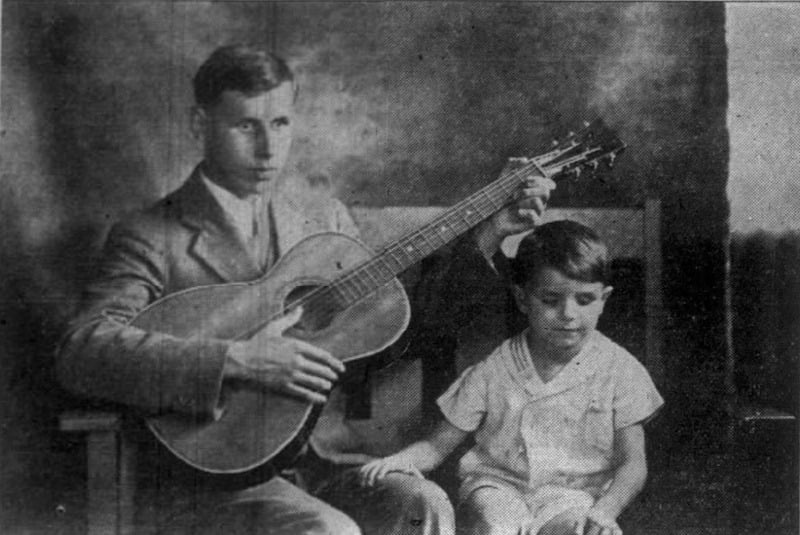Brandon Museum & Rec co-host program on Vermont's darker history: eugenics
https://brandonreporter.com/2024/08/24/brandon-museum-rec-co-host-program-on-vermonts-darker-history-eugenics/
Brandon Museum & Rec co-host program on Vermont’s darker history: eugenics
By STEVEN JUPITER
 THIS PHOTO FROM the Sept. 16, 1932 edition of the Rutland Herald shows Ivor Devino (left) at age 16, with his brother Francis, age 4. Both Ivor and Francis were blind and the article recounted their musical prowess. At the age of 22, Ivor would undergo a vasectomy under Vermont’s 1931 sterilization law.
THIS PHOTO FROM the Sept. 16, 1932 edition of the Rutland Herald shows Ivor Devino (left) at age 16, with his brother Francis, age 4. Both Ivor and Francis were blind and the article recounted their musical prowess. At the age of 22, Ivor would undergo a vasectomy under Vermont’s 1931 sterilization law.
BRANDON—Vermont has a national reputation for progressive politics with an emphasis on individual freedom. But there have been eras in Vermont’s past, even within living memory, when the state itself took actions that seemed to run completely counter to today’s commitment to civil rights. One of those eras was the 1930s, when the state enacted a law enabling the sterilization of Vermonters deemed unsuitable for parenthood.
On Sunday, August 25 at 2 p.m. at the Brandon Town Hall, the Brandon Museum and the Brandon Rec Dept will co-host an audio program by Richard Witting and Jules Lees called “Those Who Were Harmed,” which focuses on the lives of individuals who were sterilized under Vermont’s 1931 eugenical sterilization law. Each episode focuses on a different individual, with Sunday’s episode at Town Hall focusing on Ivor Devino from Forest Dale, who lived from 1916 to 1941 and was sterilized by the state’s eugenics program in 1938. “Eugenics” is the theory, now discredited, that society can be improved through “selective breeding” and elimination of “undesirable” traits from the general population.
Ivor (“EYE-ver”) Devino possessed a sharp mind and remarkable musical skills. But he was born blind and suffered throughout his life from seizures that may have been caused by epilepsy. In the early 1900s, those disabilities would have posed much greater challenges than they do today. It was also decades before the Americans with Disabilities Act and any sort of social movement that recognized the rights of the disabled. Instead, those with handicaps were often seen as burdens on their families and on the state, which provided aid to some of them.
Richard Witting, who initiated this project, was a chef who decided to pursue an M.A. in history at UVM, specializing in the history of food in Vermont. As part of that research, he began examining Abenaki food traditions, which led him to read about Abenaki history more broadly. He soon came across claims that the Abenaki were particularly targeted by Vermont’s sterilization program. Those claims, over the years, had become common knowledge in Vermont. He was surprised, however, to discover that the program seemed to target a much broader range of Vermonters than had been popularly assumed.
